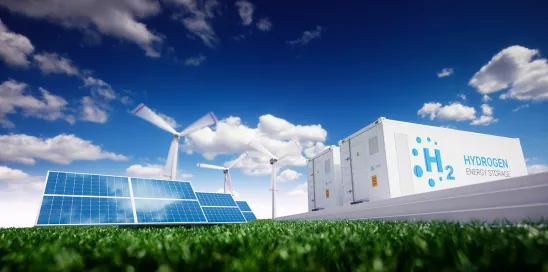Last week, the Senate Committee on Energy & Natural Resources (SENR) held a hearing on “Federal Regulatory Authorities Governing the Development of Interstate Hydrogen Pipelines, Storage, Import, and Export.” Chaired by Senator Joe Manchin (D-WV), the Committee considered how and where federal regulations can support the hydrogen industry’s growth and, in turn, the United States’ clean energy transition.
Here are some key points from the discussion:
-
Chairman Joe Manchin (D-WV) argued for clarity and predictability for interstate energy infrastructure in order to support the growth of a domestic hydrogen industry. In particular, he called for the Federal Energy Regulatory Commission (FERC) to play a role in interstate hydrogen infrastructure given their experience with natural gas and petroleum pipelines.
-
It takes, on average, four to five years to complete a pipeline project, depending on pipeline type, because of permitting issues, even though it only takes about one year to actually construct them. There was extensive discussion on the relative merits of the Natural Gas Act’s comprehensive approach versus the Interstate Commerce Act’s limited approach in accommodating investment in and buildout of linear energy infrastructure.
-
Andy Marsh, CEO of Plug Power, testified that a production tax credit of $3 per kilogram for green hydrogen and a sliding scale for blue hydrogen would strengthen the United States’ global leadership in renewable hydrogen.
-
Chad Zamarin, a senior vice president at Williams, testified that Congress should pass hydrogen production tax credits, investment tax credits for hydrogen facilities, and 45Q tax credits for carbon sequestration to enhance the industry’s economic viability.
-
There was universal support for leveraging existing natural gas pipelines as hydrogen infrastructure, despite the need for potentially significant retrofits to accommodate hydrogen transport.
Hydrogen is expected to play a central role in the United States’ decarbonization efforts and the private sector is making significant investments to supports its deployment. The key will be for Congress and Federal regulators to strike the appropriate balance between federal oversight that provides certainty and predictability, but does not overly burden the nascent hydrogen economy.




 />i
/>i

